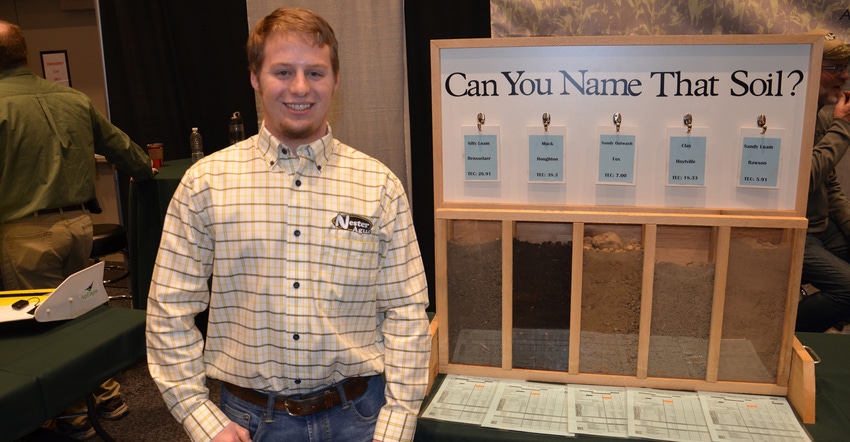
The display offered by crop consultants at the recent Fort Wayne Farm Show was an attention-getter. Nearly a dozen independent crop consultants, some of the most-respected professionals in Indiana and Ohio, manned the booth. They share one common bond: All use Brookside Labs for soil testing.
What first caught your attention? Brad Nester, Nester Ag Inc., Bryan, Ohio, stood next to a table with a display filled with five monoliths of soil. There were considerable differences in color, and even differences in texture were visible.
“Come on over and see if you can match these soils with their names,” Nester said. Five wooden blocks each displayed the name of a soil type; they could be hung on pegs, one above each soil sample.
Soils ranged from Rensselaer — a heavy, dark, poorly drained soil that is very productive when drained — to a Fox soil, which is often eroded and has gravel underneath at varying depths. Found often on gently rolling slopes, Fox is associated with other soils underlain with gravel. Irrigation is the best way to improve productivity on these soils.
There was a sandy loam and a muck soil. Mucks are also very dark and high in organic matter. In fact, they’re so high in organic matter, they can be difficult to farm, consultants noted.
The fifth soil was Hoytville, common in western Ohio. “It’s a very heavy clay soil, very wet and difficult to manage,” Nester said. “It’s often darker than the sample here. This one is dried out.”
Why know soil type names? It helps communication when talking with consultants. But even if you don’t know names, it’s important to know that soils, even on the same farm or in the same field, can have extremely different properties, Nester said. That can affect how you sample them. It can also affect management decisions, such as which soils you prioritize for pattern-tile drainage or irrigation.
About the Author(s)
You May Also Like




